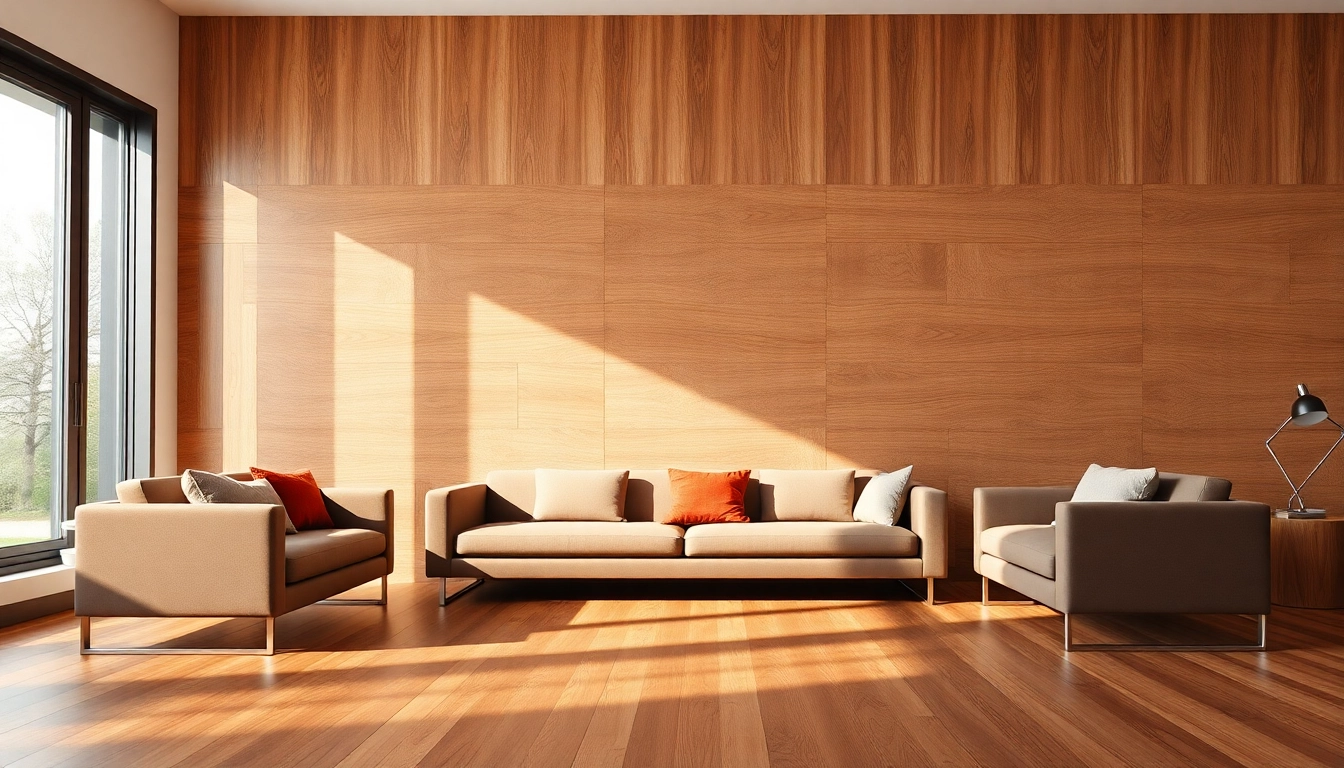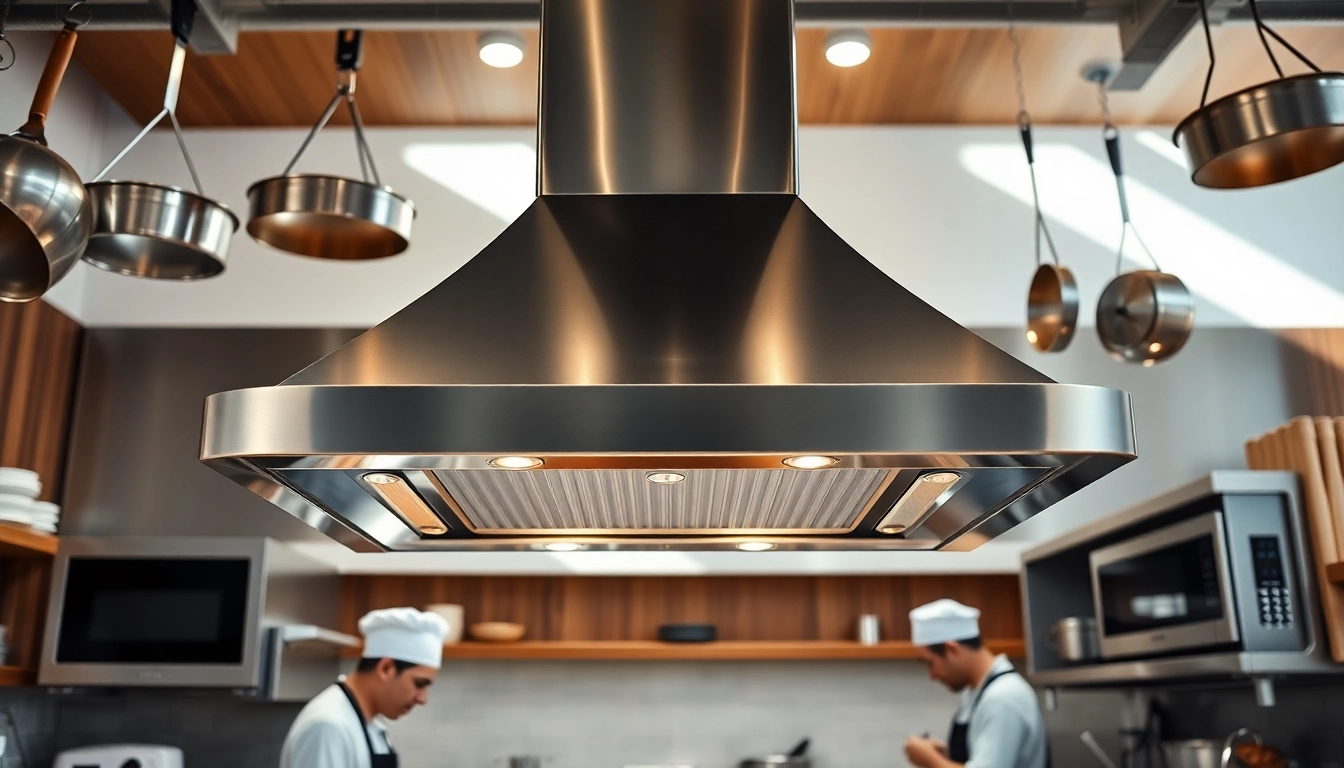
Understanding Wood Panel Texture in Interior Design
Definition and Characteristics of Wood Panel Texture
Wood panel texture refers to the natural or engineered surface finish of wood materials that adds aesthetic and tactile dimension to interiors. Typically characterized by its visual grain patterns and variations in tone, wood panel texture creates warmth and depth in any space. The beauty of wood panel texture lies in its diversity; from the rich, intricate knots of oak to the smooth, minimalistic finish of birch, each type of wood offers a unique expression that can transform an atmosphere. Environmental factors, such as light and surrounding materials, further interact with wood panel texture, bringing out its character and enhancing the overall design narrative of a room.
Benefits of Using Wood Panel Texture in Spaces
Incorporating wood panel texture into interior design provides numerous benefits. Primarily, it adds visual interest through its natural aesthetic, breaking the monotony of flat surfaces and introducing a tactile element that engages the senses. Furthermore, wood has natural acoustic properties that can improve sound quality in a room, making it ideal for spaces such as home theaters or offices. Additionally, wood paneling can enhance insulation, contributing to energy efficiency and comfort. Lastly, the warmth and organic feel of wood textures create a welcoming environment, making them ideal for both residential and commercial applications.
Trends in Wood Panel Texture for Contemporary Design
The interior design landscape has seen a resurgence of interest in natural materials, with wood panel texture at the forefront of this trend. Contemporary design often embraces sustainable practices, leading to a preference for reclaimed and eco-friendly wood options. Textured wood panels are increasingly being used to create focal walls in living rooms and the introduction of mixed materials, such as metal and glass, alongside wood textures enhances visual dynamism. Another emerging trend includes the use of bold, dark hues paired with intricate wood grains, offering a dramatic twist to traditional designs. Furthermore, technology has influenced design innovations, with acoustic wood panels integrated into spaces not only for aesthetics but also for effective sound management.
Types of Wood Panel Texture and Their Applications
Natural Wood Finishes: Achieving Organic Appeal
Natural wood finishes celebrate the inherent qualities of the wood, allowing its character to shine through. Treatments like oiling or varnishing preserve the raw beauty of the grain while providing protection and enhancing the color. Applications of natural wood finishes can be seen in various settings, such as warm-toned oak panels used in cozy living rooms or elegant walnut finishes in sophisticated dining areas. These organic appeals come with unique advantages, including the ability to match multiple design styles, from rustic to modern, thereby ensuring versatility across different projects.
Painted Wood Textures: Versatility and Style
Painting wood panels introduces a vibrant or muted palette that can either accentuate or transform the visual dynamics of a space. This versatility allows designers to experiment with color schemes, creating dramatic contrasts or harmonious blends with existing décor. Choices like matte finishes provide a smooth, modern look, while distressed or textured paint options can evoke a vintage charm. Painted wood textures find their applications in various settings, from playful kids’ rooms featuring bright colors to understated elegant studies adorned with soft pastel shades. This adaptability ensures that painted wood textures remain a trendy option in residential and commercial interiors alike.
Textured Wood Panels: Adding Depth to Interiors
Textured wood panels bring a three-dimensional quality to interiors, creating a sense of depth and luxury. Whether through grooves, ridges, or raised patterns, these panels can significantly alter the perception of space. Common applications include accent walls that serve as focal points in living areas, where their depth can enhance lighting effects and shadow play. Textured wood can also be utilized in cabinetry, ceiling designs, and furniture, inviting a tactile quality that encourages interaction. Designers often choose textured wood panels to achieve an inviting atmosphere that feels both modern and timeless.
Choosing the Right Wood Panel Texture for Your Project
Factors to Consider: Space, Style, and Functionality
Selecting the appropriate wood panel texture involves considering various factors. The first step is to analyze the space itself—its size, lighting, and existing style. For smaller areas, lighter woods can help create an illusion of openness, while larger spaces may benefit from richer, darker woods that ground the elements. Next, the overall design style plays a crucial role; rustic spaces may align better with reclaimed wood textures, whereas modern aesthetics might call for sleek, painted panels. Additionally, the functionality of the space must be assessed; sound insulation requirements in a home office or acoustic considerations in a media room are essential in determining the most suitable options. Integrating these aspects will ensure a cohesive and functional design outcome.
Consultation and Expert Advice on Texture Selection
Working with design professionals or material consultants is invaluable when selecting wood panel textures. Experts can provide insights into the latest trends, durability, maintenance requirements, and aesthetic compatibilities based on their extensive knowledge and experience. They can also assist in sourcing materials that align with your vision while adhering to budget constraints. Engaging in consultations can streamline the decision-making process, resulting in a more curated and cohesive outcome that embraces the character of the chosen wood panel texture.
Case Studies: Successful Projects Featuring Wood Panel Texture
Several notable case studies underscore the successful integration of wood panel texture into diverse projects. For instance, a recent office renovation showcased textured wood panels that not only enhanced the aesthetic appeal but also improved acoustic performance, creating a productive work environment. Another residential project involved using reclaimed barn wood for accent walls, adding a rustic charm while telling a story of sustainability. These projects indicate how wood panel textures can elevate design narratives while fulfilling practical needs, proving their effectiveness across various settings.
Installation Best Practices for Wood Panel Texture
Preparation: Tools and Materials Needed
Successful installation of wood panel textures begins with proper preparation. Key tools typically include a level, measuring tape, chalk line, and a saw for cutting panels accurately. Furthermore, investing in good-quality adhesive and fasteners will ensure durability and stability. Depending on the design, you may also require a nail gun, trim kit, or safety gear. Additionally, selecting the correct substrate is crucial, whether it’s drywall or plywood, to provide a solid foundation for the panels. Preparing a detailed plan helps streamline the process and reduces the risk of complications during the installation.
Steps to Install Wood Panel Texture Correctly
The installation process of wood panel texture generally follows a structured sequence. Start by ensuring the surface is clean, dry, and free of imperfections. Next, measure and mark the layout on the wall, establishing a starting point. It’s often advisable to begin from the center and work outward to maintain symmetry. Apply adhesive and secure the panels, ensuring they are flush and level. For panels that require fastening, be cautious not to overdrive screws or nails, as this can damage the wood. Finally, trimming and finishing the edges will contribute to a polished look.
Common Mistakes to Avoid During Installation
Installers often encounter pitfalls that can jeopardize the quality of the wood panel texture application. One primary mistake is neglecting to acclimate wood panels to the room’s environment, leading to expansion or contraction post-installation. Additionally, rushing measurements can result in uneven panel placements, affecting visual appeal. It’s essential to avoid using inappropriate fasteners or adhesives that could compromise the integrity of the panels over time. Ensuring proper ventilation during installation and adhering to safety regulations will contribute to a successful project.
Maintaining and Caring for Wood Panel Texture
Cleaning Techniques to Preserve Texture Quality
To retain the natural beauty of wood panel textures, regular cleaning and maintenance are essential. Routine dusting with a soft cloth removes particulate matter without damaging the surface. For deeper cleaning, a damp cloth with a mild detergent can be used, avoiding excessive moisture that may harm the wood. Additionally, using furniture polish periodically helps maintain sheen and enhances protective coatings. Familiarizing yourself with the specific wood species and treatments used in your panels can inform appropriate cleaning methods while ensuring longevity.
Repairing Damage: Options for Wood Panel Texture
Over time, wood panel textures may suffer from scratches, dents, or discoloration. Fortunately, most damage can be repaired. For minor scratches, buffing with a grain-matching touch-up marker can suffice. For deeper blemishes, sanding down the affected area and applying a matching finish can restore its beauty. In cases where panels are significantly damaged, replacement of the affected section may be necessary. Consulting with a professional can provide customized solutions based on the extent of the damage and the specific type of wood panel texture in use.
Longevity: Extending the Life of Your Wood Panel Texture
To maximize the lifespan of wood panel textures, regular maintenance and protective measures are imperative. Maintaining consistent humidity and temperature levels in the environment can prevent warping and cracking. Additionally, periodic inspections will help identify potential issues before they escalate. Implementing guidelines for moisture management, such as using humidifiers in dry climates or ensuring proper drainage in damp situations, will enhance durability. Through proactive care and consideration, wood panel textures can continue to contribute to the beauty and functionality of spaces for many years to come.






